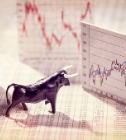Well-known asset management groups such as Artemis, Invesco and Schroders have seen a significant number of their funds make top quartile returns for their investors since the start of the ‘re-opening trade’ last year, Trustnet research has found. 
The announcement of several effective coronavirus vaccines in November 2020 sustained the stimulus-driven rally that had been in play for several months but with a twist – market leadership switched from growth stocks to value names as investors eyed a coming period of stronger GDP and inflation.
This has caused some significant changes to the relative performance of funds, with many of those that had been at the bottom of the performance tables moving to the top and vice versa.
With this in mind, Trustnet has reviewed the performance of every fund in an Investment Association sector (where a quartile ranking is appropriate) since ‘Vaccine Monday’ on 9 November 2020 and grouped them by fund house, to see which asset managers’ have the biggest proportion of their range in the top quartile.
The table below shows all the large fund houses (those with 10 funds or more) with more than one-third of their range in the top quartile since 9 November. It should be kept in mind that this is a short time frame on which to judge performance.

Source: FE Analytics
Sitting at the top of the list is Artemis Fund Managers, with 12 of its 19 eligible funds (or 63.2 per cent of its range) are sitting in the first quartile of their respective sector.
Among these are Jacob de Tusch-Lec and James Davidson’s £1.3bn Artemis Global Income, Ed Legget and Ambrose Faulks’ £1.2bn Artemis UK Select and Alex Ralph’s £920m Artemis High Income funds.
Explaining its stock selection process, Artemis said: “We believe that, whatever markets are doing, opportunities for above average returns are available for active managers.
“In practice this means that we only buy a share if we believe that it is undervalued, and not because it represents a significant proportion of the index. We are benchmark-aware, not benchmark-driven.”
Artemis added that this approach tends to lead to ‘high conviction’ portfolios, which tend to look different to the benchmark and their competitors.
Indeed, the preference for undervalued companies will have pulled some of the group’s managers away from the popular quality-growth stocks that led the market for much of the recent past, but have started to trail in the ‘re-opening trade’, while pushing them towards previously unloved cyclical names.
In a recent investor update, Artemis Global Income manager de Tusch-Lec highlighted this, saying: “In some instances, the rotation away from 2020’s winners has already been dramatic. This in itself may be enough to spark a serious debate: are we finally at a tipping point?
“We may be at the point at which the hitherto successful strategy of being long tech, growth, momentum disruption and growth – and of being short of value, emerging markets and Europe begins to go into reverse.”
Performance of Artemis Global Income vs sector and index since ‘Vaccine Monday’

Source: FE Analytics
Several other well-known asset management houses have seen a large share of their fund ranges generate top-quartile returns since ‘Vaccine Monday’ sparked the re-opening trade.
One of them is Invesco, where 53.7 per cent of its eligible funds are in the top quartile since 9 November 2020. While not a pure value house, the approach behind many of Invesco’s funds put valuation at their heart, considering it to be the key determinant of future returns.
Paul Causer, Ciaran Mallon and Rhys Davies’ £2.3bn Invesco Monthly Income Plus, John Surplice and James Rutland’s £1.8bn Invesco European Equity and William Lam’s £1.6bn Invesco Asian funds are some of the group’s funds at in the top quartile of their peer group.
Schroders is another big name on the list. Although the group’s funds cover a range of styles and approaches it is home to a respected value equity team, headed up by Nick Kirrage and Kevin Murphy.
Some of the value team’s funds have generated very strong returns since ‘Vaccine Monday’, including the £1.2bn Schroder Recovery (up 43.59 per cent), £1.7bn Schroder Income (40.67 per cent) and £749m Schroder Global Recovery (37.9 per cent) funds.
But one of the group’s specialist funds is currently the top performer by a wide margin and has made the highest total return of the entire Investment Association universe over the re-opening trade so far: Schroder ISF Global Energy. This fund is up 76.31 per cent, thanks a rebound in the oil price that followed the promise of more economic activity in 2021.
Of course, the rotation in market leadership means that some fund groups that performed strongly when the growth style was driving the market have since seen their relative performance slip.
This can be seen in the table below, which reveals the fund groups with the fewest funds making top quartile returns since 9 November 2020. We’ve included all those that have 10 per cent or fewer of their eligible funds at the top of the sector.

Source: FE Analytics
Many of the groups should be familiar names as they have made healthy returns for their investors over the long run, largely down to a preference for growth stocks and sectors like technology.
These are the areas that have been out-of-favour since investors started preparing for higher economic growth and inflation, which tends to be a better environment for cyclical/value stocks. However, the jury is very much out on how long these conditions will persist – April did see the growth style buck the recent trend and outpace value stocks.






